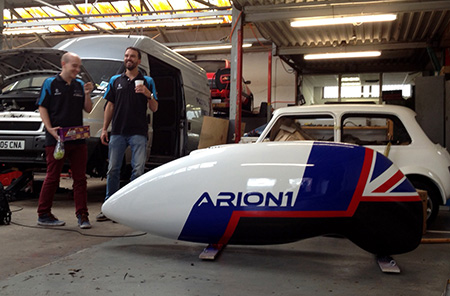
The University of Liverpool team aiming to build the world’s fastest human powered vehicle will put 30 applicants through rigorous testing on Wednesday as they seek their “engine”.
The student-led team appealed for fit and committed volunteers to step forward to take the pedal powered machine to speeds above 83mph, as they go for the world record in September next year.
Patrick Harper is Lead Ergonomics Engineer and Commercial Manager of the University’s Velocipede Team (ULV), he said: “We’re looking for our engine, someone who can power our machine. Ideally it would be someone with a small body and powerful legs, but finding someone like that is very difficult.
Measurements
“We’ll be taking measurements of them all, making sure of their height and the width of their hips and their shoulders because we will be tailoring the bike around them.”
Applicants range from teenagers to those in their 40s, and all will face the same rigorous testing on an ergometer, or specialist exercise bike.
First up is a Peak Power test, followed by a Wingate test and finally the feared Ramp test, which lasts 15 to 20 minutes and sees resistance increased across that time, ahead of a pure power and stamina sprint.
The performance of all the applicants will be assessed by ULV alongside experienced sports scientists from both Liverpool John Moores and Liverpool Hope Universities.
A decision will then be made on either one or two riders, who will then take the bike – known as ARION1 – to the World Human Power Speed Challenge (WHPSC) in Battle Mountain, Nevada in September 2015.
The current male land speed record is 83.13mph and current female land speed record is 75.69mph. ULV is hoping to smash these records by 7% using ARION 1.
The machine is 35 times more aerodynamic than a regular pedal cycle and boasts a 1:17 gear ratio, aiming to generate 800 to 850 watts of power from a female or male rider respectively.
Passionate
Patrick added: “It’s brilliant, we all love it. A couple of us worked flat out through the summer just to keep the project going because we are so passionate about it.
“We knew we would have to do that work to make sure we get there in September.”
Follow the ULV team on twitter @ULVTeam
